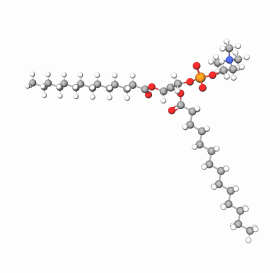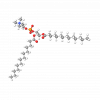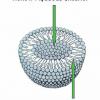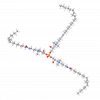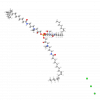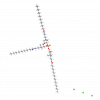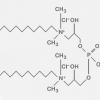Lecithin was discovered by a French chemist Theodor Gobley in 1845. Gobley was able to isolate the orange substance found in an egg's yolk. He found that this substance had unique emulsifying properties. Gobley named it "Lecithin," which is the Greek name for egg yolk: Lekythos.
This natural emulsifier is composed of 5 phospholipids: Phosphatidylcholine (PC), Phosphatidylethanolamine (PE), Phosphatidylinositol (PI), Phosphatidylserine (PS), and Phosphatidic Acid (PA). It has unique emulsifying properties that have led to it being widely used in health supplements, food, skincare, and confectionery industries, and other applications.
It occurs naturally in our food sources that are traditionally high in cholesterol like eggs, liver, peanuts, and beef. Commercial phospholipids are mainly derived from Lecithin extracted from soybeans used as raw material, but sunflower, rapeseed, or milk also contain different phospholipids and fatty acids.
It's primarily used for its emulsifying properties but also to nourish and protect the skin's surface. Lecithin is a mix of phospholipids, a miracle serum with a high affinity to skin, and penetrates quickly to nourish the skin's cell membranes, leaving skin and hair smooth, healthy, and shiny.Its ability to form a film on the skin's surface reduces transdermal water loss and aids skin hydration. However, Lecithin's penetration-enhancing properties can be viewed negatively at times because it could carry undesirable chemicals across the skin barrier.
This structure-forming component helps repair dry hair. It infuses your hair with moisture and restores its natural barrier. In addition, Lecithin replenishes lost lipids, which prevents dryness and promotes skin elasticity.
Ingredients
Nanoparticles / Liposomes
Lecithin can act as an envelope in a tailor-made delivery system to enhance the bioavailability of cosmetic ingredients to the skin. The main function of our skin is to protect our body against water loss and against chemical and mechanical impacts. This is achieved by a special structure of the outermost skin layer, the epidermis. Dead, horny cells embedded in a lipid layer form a skin barrier with high mechanical resistance that is impermeable for most substances. The viable cell layers below called the dermis, form the skin tissue that imparts elasticity and firmness and is the site of action for anti-aging ingredients.
Nanoparticles / Liposomes are vesicles based on phospholipids (lecithin) dispersed in water, designed to transport cosmetic ingredients into the skin. Liposomes, that have a water core, are carriers for water-soluble ingredients whereas the oil-containing nanoparticles are the carriers for lipophilic compounds. If these vesicles are very small, they can penetrate into the skin. After the release of the active substances, the phospholipids fuse with the epidermal lipids and increase skin moisture as a positive secondary effect.
Percutaneous Absorption
Skin absorption study with ten human volunteers. The ingredient genistein was applied in different formulations on the forearm. After 4 hours a series of tape strippings were taken and analyzed for genistein. The genistein was clearly found in deeper epidermis layers when it was formulated with liposomes.
